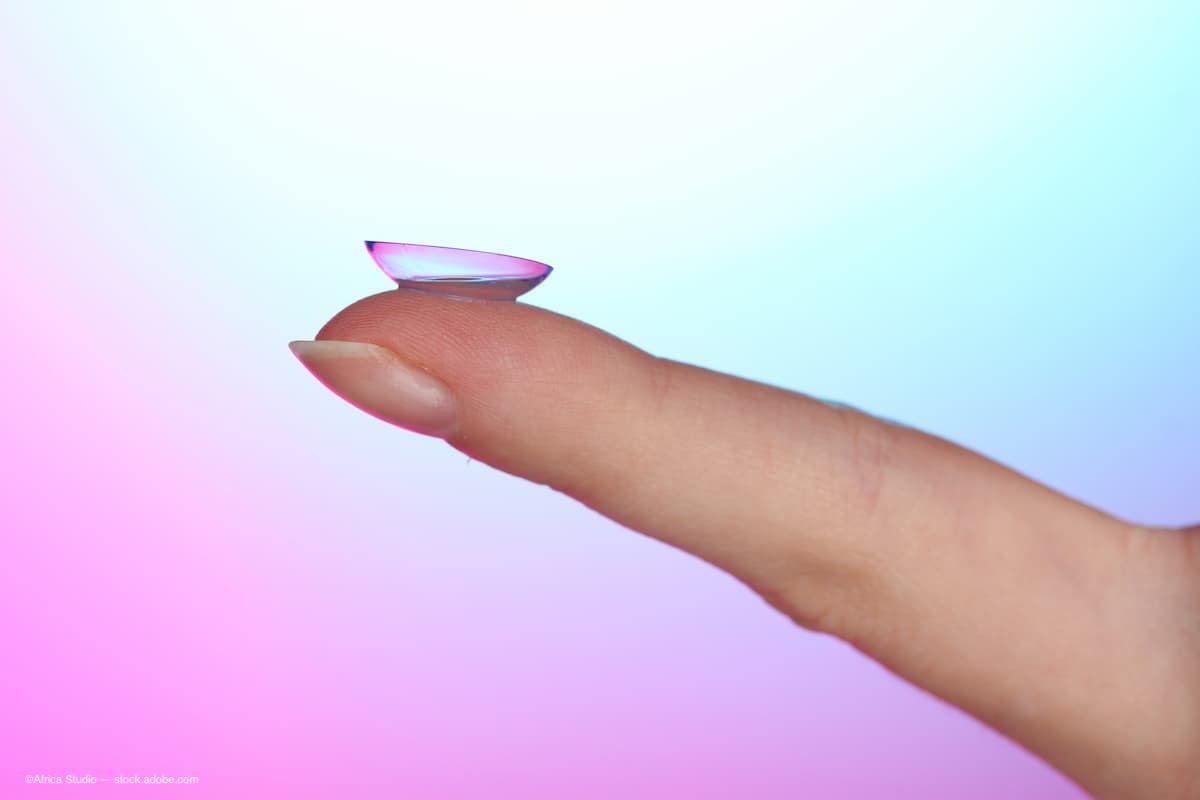Article
ARVO 2023: Eyevensys announces positive preclinical data demonstrating efficacy of EYS809 over aflibercept for wet AMD
Author(s):
Francine Behar-Cohen, MD, PhD, presented the data at the Association for Research in Vision and Ophthalmology Annual Meeting in New Orleans.
The EYS809 dual plasmid is developed as a first-in-class treatment, resulting in production of the well-established anti-VEGF protein, aflibercept, as well as decorin, a promising candidate. (Image courtesy of Adobe Stock)

Eyevensys today announced a scientific presentation at the 2023 Association for Research in Vision and Ophthalmology (ARVO) annual meeting in New Orleans, reporting data showing the efficacy and durability of EYS809, a dual-gene plasmid in development for the treatment of wet age-related macular degeneration (AMD).
According to the company, EYS809 is delivered via its electrotransfection technology and encodes both aflibercept, an anti-vascular endothelial growth factor (VEGF) protein, and decorin, an anti-fibrotic native protein that targets choroidal neovascularization (CNV), vascular leakage, and subretinal fibrosis.
The EYS809 dual plasmid is developed as a first-in-class treatment, resulting in production of the well-established anti-VEGF protein, aflibercept, as well as decorin, a promising candidate. Decorin has been found to play key roles in inhibiting angiogenic factors and regulating various pathways involved in retinal diseases, including the formation of CNV, retinal pigment epithelium (RPE) barrier breakdown, and epithelial-mesenchymal transition (EMT) of RPE cells, which contribute to subretinal fibrosis in wet AMD.
Moreover, the company noted that in a rat model of persistent CNV, EYS809 outperformed intravitreal aflibercept, demonstrating ongoing reduction in both vascular leakage and CNV lesions. Additionally, EYS809 significantly promoted repopulation of theRPE over the CNV lesion, indicating its potential to promote disease regression and reduce the need for retreatment.
These preclinical results support the growing body of evidence that decorin is a key target in halting the pathogenesis of retinal diseases. EYS809 is unique in integrating both the decorin pathway and the established anti-VEGF pathway and has the potential to deliver improved treatment outcomes for patients wet AMD.
"We are pleased to add these data to a growing body of evidence in support of EYS809 for the treatment of wet AMD, suggesting improvements in efficacy and durability with our dual plasmid over standard intravitreal aflibercept," Francine Behar-Cohen, MD, PhD, founder and chief innovation officer at Eyevensys, said in a statement.
Eyevensys' proprietary electrotransfection system and non-viral plasmids also uniquely target the ciliary muscle, resulting in sustained protein expression directly in the choroid and vitreous—a novel and promising treatment approach to retinal diseases. The design of the electrotransfection device has been clinically validated and optimized in collaboration with retinal specialists and ophthalmic engineers for intuitive use. This unique drug delivery platform ideally addresses the unmet medical need for long-lasting treatments for eye diseases.
"The Eyevensys DNA plasmids and electrotransfection platform use the ciliary muscle to induce sustained production of therapeutic proteins," Sunil Srivastava, MD, a retina specialist in Cleveland, Ohio, with experience using the Eyevensys system, said in a statement. "This has great potential in the treatment of chronic, sight-threatening diseases like wet AMD."
Newsletter
Don’t miss out—get Ophthalmology Times updates on the latest clinical advancements and expert interviews, straight to your inbox.




